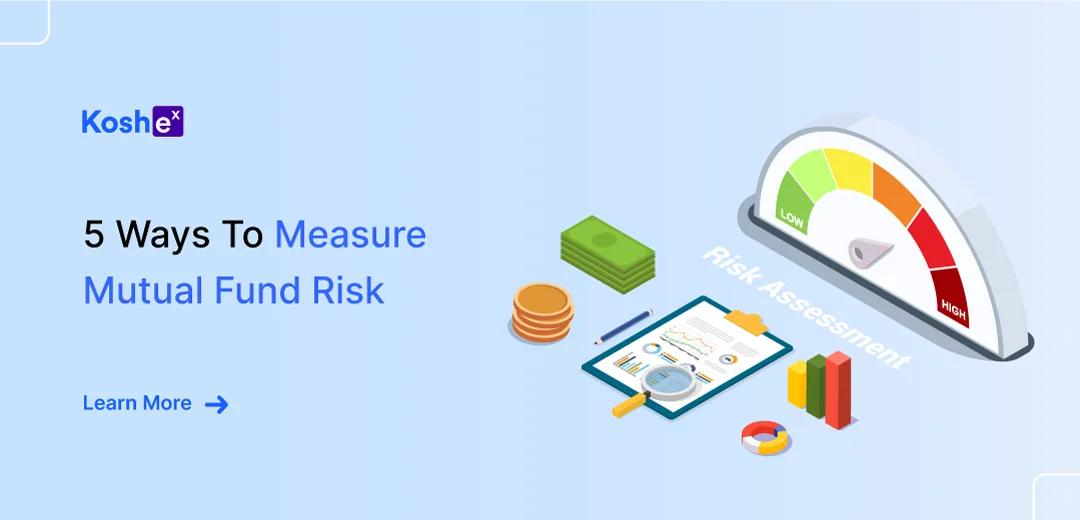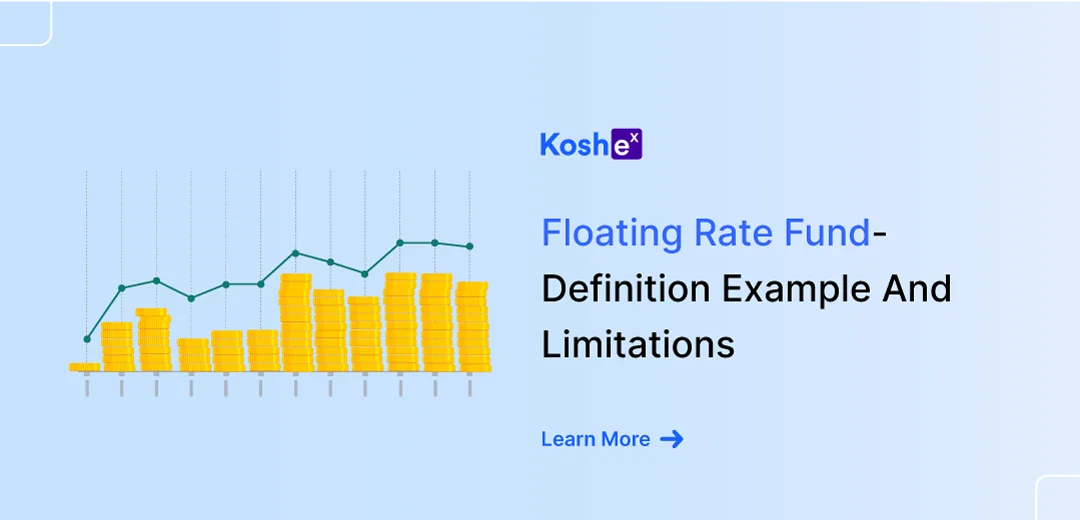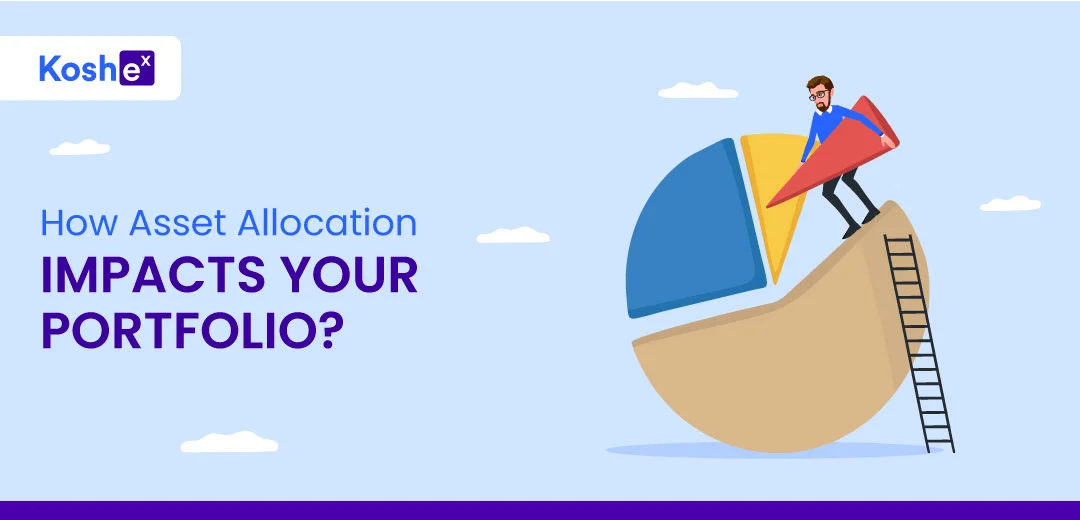Overview
Keen to get started with investing in mutual funds and wondering how to measure mutual fund risk? A good approach is to research mutual fund trends and track MF performance-related data. Risk, when it is thoroughly researched, understood, and planned for, is manageable. Sign up on the Koshex platform to learn how to measure risks associated with mutual funds and to get started with the investment journey.
Let’s also take a closer look at the 5 ways to measure risks associated with Mutual Funds:
Surplus Returns As Compared To Benchmark Index
In simple terms, it indicates surplus returns generated by the fund in comparison with the benchmark index with the redefined amount of risk taken by the fund manager. For example, if the Bank NIFTY index delivered 12% in the past year and the fund manager delivered 15%, then the surplus generated is +3%. And if the fund performance achieved only 8%, then its negative is -2%.In MF terminology, this is popularly known as Alpha.
Hence, funds that are managed actively can generate positive alpha, and index funds will not produce anything excess.
The crux of investing in mutual funds lies in how a fund can surpass the returns benchmarked against index funds.
Risk Measurement Of The Underlying Fund Against The Benchmark Index
This measure helps us in assessing the volatility and risk of the underlying fund as compared to the benchmark index. In simple terms, it explains the riskiness of the fund as compared to the benchmark index. In MF terminology it is called Beta, the default beta of a particular MF is defined as 1%,
a) If the underlying beta of the fund is 1%, then it means that the return of the fund will be moving in the same direction as the benchmark fund and vice versa.
b) A higher beta (a Beta value greater than 1) indicates high volatility and it has the potential to generate high returns when the market rises or record losses when the market declines.
c) In a similar manner, a beta of less than 1% would indicate that returns are not very sensitive to a benchmark index. It means if the benchmark index increases by 1%, then our returns would not increase in a similar manner and vice versa.
d) Beta of -1 indicates that it moves in the exact opposite direction to the benchmark index. For instance, if the index delivers a 1% return, then the fund would deliver a -1% return and vice versa.
Measuring MF Returns Through Absolute And Compounded Returns Methods
In MF terminology, the calculation of return is important while using standard deviation methodology. This is unlike traditional investment instruments such as PPF and FDs, where the returns are static and fixed in nature. The same doesn’t hold true in the case of MFs since returns are volatile and are measured based on monthly returns, spanning a specific number of years.
a) Absolute Returns: In this case, we simply calculate the opening cost- selling cost. For example, if our purchase price is 100 and at the end of the 2nd year, our selling value is 120 then it would be (Rs 120-100)/100=20% for 2 years and 10% PA. Remember, this particular method does not consider the time value of money.
b) Compounded return: Continuing with the above example, the formula for arriving at CAGR would be:
CAGR= (Ending Balance/Beginning Balance)^(1/number of years)
Hence, our compounded annual returns would be (120/100)^(1/2)=9.54% PA, This is the appropriate way of measuring the returns in the fund considering the time value of money.
Absorption Risk
This refers to subsequent investment under the MF scheme wherein underlying stocks are exposed to the concentration risk of one segment. For example, the fund manager has purchased all stocks related only to the IT industry or metal stocks. At times, they may deliver greater alpha but at the same time, concentration risk also takes away the returns when times are not favorable for the same segment.
Fluidity Risk
It refers to a scenario wherein the fund should be liquid enough for the investor so that he/she can encash it at the time of need or switch over to better-performing funds. The greatest liquidity risk arises when investors subscribe to bonds issued by private players, and due to unforeseen contingencies, there is a need to liquidate them, but there are no buyers available due to the lack of marketability of those bonds.
Conclusion
Irrespective of which type of fund you plan to invest in, it is essential to be fully aware of the risks associated with it. From understanding the pros and cons to deciding which MFs to invest in, risk analysis is an integral part of financial planning that can provide a solid foundation to every investor who starts on the investment journey. In the case of mutual funds, knowing the underlying risks results in taking better decisions, reducing the chances of losses, which in turn helps in generating better returns for investors.
By explaining 5 ways to measure mutual fund risk, we’ve got you covered as our analysis here compares various risk assessment parameters that are closely linked with choosing the right mutual funds. With an emphasis on understanding mutual fund risk, we already covered important factors that need to be considered by mutual fund investors.
Sign up on the Koshex platform and get started with smart investments!
Frequently Asked Questions (FAQs):
1. Are mutual funds risk-free?
No, Mutual Funds are not completely risk-free and do not guarantee assured return products. Investment in Mutual Fund Units results in above mentioned risks and their returns are also affected by liquidity volumes, size volumes, and default risk, all of which could also result in possible loss of principal. However, this can be minimized by thoroughly analyzing the offer document and diversifying one’s portfolio.
2. Which is the correct way of measuring returns under MF?
There are various ways of measuring returns under MF. The most popular and accurate method is explained above, which is CAGR (compound annual growth return). However, this method will be applicable when calculating returns for more than 1 year.
3. How long should one be invested in a particular fund to maximize returns?
The MF universe offers ample funds to choose from which can be short-term and long-term. Short-term is synonymous with debt funds and long-term is associated with equity. Based on the needs of the investors one can choose from the options available. If investors want to maximize returns, being invested for the long term, such as 5 to 15 years, can generate good returns for them.









Leave a Comment